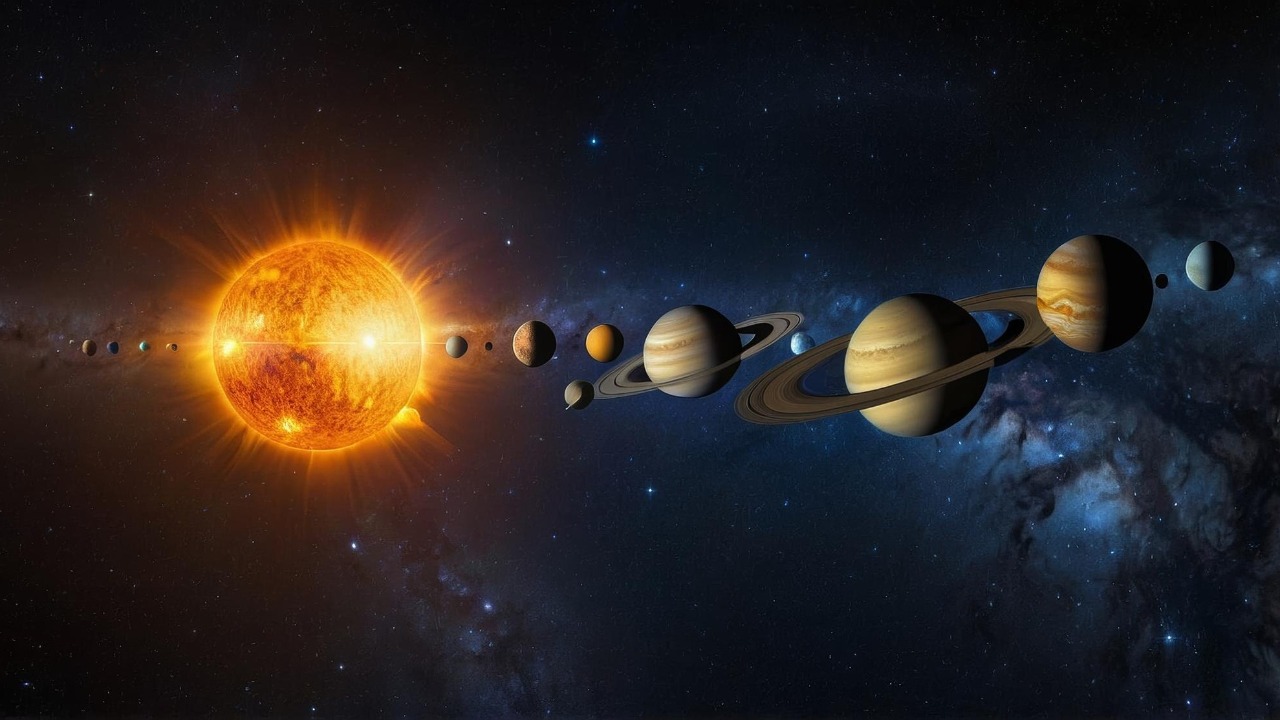
Astronomers have recently discovered compelling evidence suggesting that ageing stars, similar to our Sun, consume nearby planets during their late evolutionary stages. This dramatic process, which likely occurs as these stars expand into red giants, leaves detectable traces in their white dwarf remnants, providing a glimpse into the potential fate of planetary systems like our own.
The Evolution of Sun-Like Stars
Stars like our Sun undergo a fascinating journey throughout their lifetime. Initially, they exist in a phase known as the main sequence, where they burn hydrogen in their cores. However, as they exhaust their hydrogen supply, they begin to expand, transitioning into a phase known as the red giant. This expansion is so significant that it could potentially engulf inner planets.
According to stellar evolution models, our Sun will, in approximately 5 billion years, bloat to a size that reaches Earth’s current orbit. Following this red giant phase, stars like the Sun shed their outer layers, forming a planetary nebula, and leave behind a dense core known as a white dwarf. This transition sets the stage for detecting material that the star may have swallowed during its red giant phase.
Mechanisms of Planetary Engulfment
Several factors contribute to the engulfment of planets by their parent stars. Tidal forces and orbital decay can draw planets closer to their stars, making them more susceptible to being swallowed as the star expands. Additionally, atmospheric drag and mass loss from the star can accelerate this process during the red giant phase.
Interestingly, when a star engulfs a planet, it leaves behind detectable traces. These chemical signatures, often in the form of heavy metals, pollute the star’s atmosphere, providing astronomers with clues about the star’s dietary history.
Observational Evidence from White Dwarfs
White dwarfs, the remnants of stars like our Sun, provide a wealth of information about their past. Spectroscopic analysis of these celestial bodies has revealed unexpected pollution from rocky planet debris, suggesting that these stars have consumed planets in their vicinity.
Data from astronomical surveys indicate that up to a quarter of white dwarfs show signs of recent planetary ingestion. This ‘strong evidence’ supports the theory that ageing stars like the Sun do indeed swallow nearby planets.
Case Studies of Affected Systems
Several specific white dwarf systems have provided valuable insights into this phenomenon. In some cases, the metal lines in the spectra of these stars match the compositions of Earth-like planets, suggesting that these stars have consumed rocky planets.
There are also examples where remnants of planets orbit at distances too close to have survived the star’s red giant phase unscathed. Furthermore, observations of dust disks around white dwarfs serve as indirect proof of disrupted and partially swallowed orbits.
Implications for the Solar System
These findings have significant implications for our own Solar System. As the Sun expands into a red giant, inner planets like Mercury and Venus are likely to be swallowed. Outer planets, such as Jupiter, may have a chance of survival if they migrate outward to avoid engulfment.
This evidence helps refine our understanding of the Solar System’s endgame, which is expected to occur in approximately 5–7 billion years. It provides a sobering reminder of the dramatic fate that awaits our planetary family.
Methods Used in Detection
Astronomers employ a variety of tools and techniques to detect signs of planetary engulfment. Ground-based telescopes and space observatories, like Hubble or JWST, are used to spot pollution signatures in the atmospheres of white dwarfs.
Radial velocity and transit methods play a crucial role in identifying pre-engulfment planetary orbits around ageing stars. Additionally, computational simulations are used to model engulfment dynamics, further validating the ‘strong evidence’ from observations.
Broader Astrophysical Insights
The findings also have broader implications for our understanding of the universe. They help explain the observed scarcity of close-in planets around old stars, serving as indirect confirmation of the planetary engulfment theory.
This research refines our understanding of planetary system stability across the galaxy. It also opens up avenues for future surveys targeting more white dwarfs, which could help quantify the frequency of planetary swallowing and provide further insights into the life cycles of stars and their planets.
More from MorningOverview